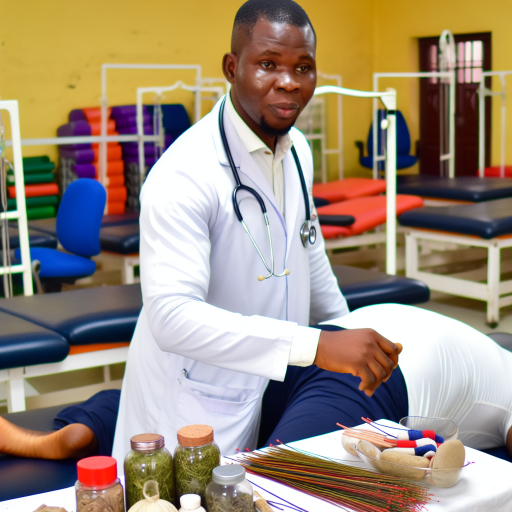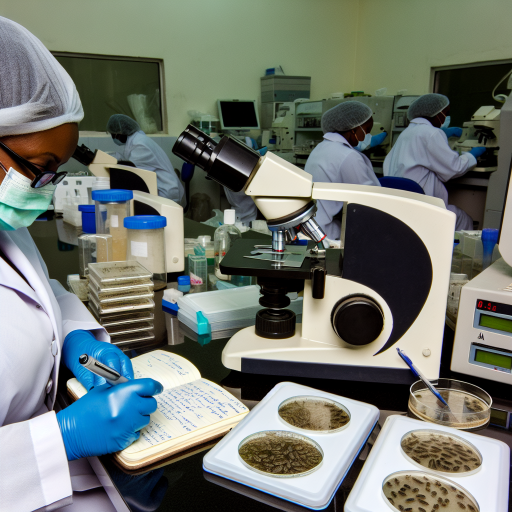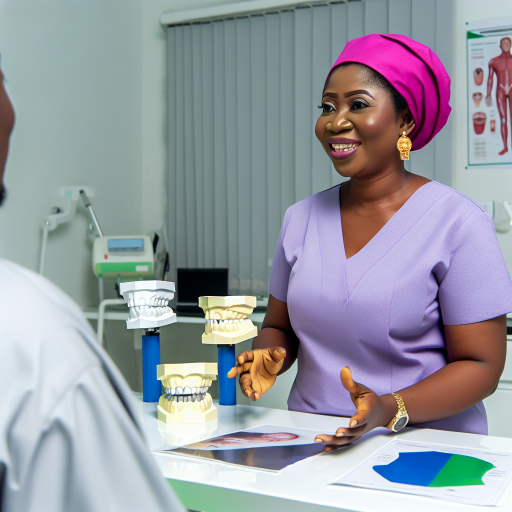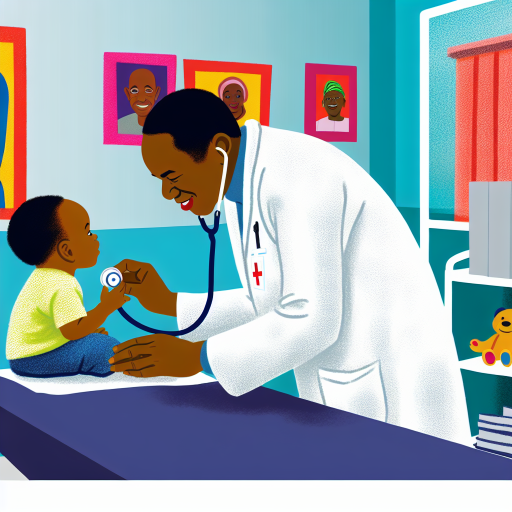Medical Imaging Techniques in Healthcare
Medical imaging techniques are essential tools used by healthcare professionals to visualize and diagnose various medical conditions.
These techniques help in identifying abnormalities, guiding treatments, and monitoring progress.
Having access to medical imaging in Nigeria is crucial for timely and accurate diagnosis and treatment planning.
It plays a significant role in improving patient outcomes and reducing morbidity and mortality rates.
Brief Overview of Medical Imaging Techniques
Medical imaging techniques include X-rays, CT scans, MRI, ultrasound, and nuclear medicine imaging.
These techniques provide detailed images of the body’s internal structures, allowing healthcare professionals to assess and diagnose different health conditions.
Importance of Medical Imaging in Diagnosis and Treatment
Medical imaging is vital for early detection and accurate diagnosis of diseases such as cancer, heart conditions, and neurological disorders.
It helps in planning interventions, monitoring treatment responses, and guiding surgical procedures.
Availability and Use of Medical Imaging in Nigeria
In Nigeria, medical imaging techniques are becoming increasingly available in both public and private healthcare facilities.
However, access to advanced imaging modalities may be limited in certain regions due to infrastructure challenges and cost constraints.
Despite these limitations, efforts are being made to improve the accessibility of medical imaging services in Nigeria.
Training programs for healthcare professionals are being implemented to enhance skills in interpreting imaging results and delivering quality patient care.
Medical imaging plays a critical role in the healthcare system in Nigeria, contributing to better patient outcomes and advancing the quality of medical care in the country.
X-ray Imaging
When using X-ray imaging, a beam of electromagnetic radiation is passed through the body, creating an image on a detector.
Common uses of X-ray imaging in Nigeria include diagnosing fractures, dental issues, pneumonia, and other internal injuries.
Availability of X-ray machines in Nigeria varies, with major hospitals and diagnostic centers having this equipment.
Cost implications of X-ray imaging in Nigeria can range from affordable in public hospitals to expensive in private facilities.
CT Scan Imaging
A CT scan uses a combination of X-rays and computer technology to create detailed cross-sectional images of the body.
Common uses of CT scans in Nigeria include identifying tumors, internal injuries, and abnormalities in various parts of the body.
CT scan machines are available in major cities in Nigeria, but access may be limited in rural areas.
Cost of a CT scan in Nigeria depends on the facility, but it is generally more expensive than X-ray imaging.
Ultrasound Imaging
Ultrasound imaging uses high-frequency sound waves to create images of the body’s internal structures.
Common uses of ultrasound imaging in Nigeria include monitoring pregnancy, diagnosing organ abnormalities, and evaluating blood flow.
Ultrasound machines are relatively more accessible in Nigeria, with many hospitals and clinics equipped with this technology.
Cost of ultrasound imaging in Nigeria varies, with public hospitals offering more affordable services compared to private clinics.
MRI Imaging
MRI (Magnetic Resonance Imaging) uses a magnetic field and radio waves to generate detailed images of the body’s organs and tissues.
In Nigeria, MRI is commonly used to diagnose conditions affecting the brain, spine, joints, and soft tissues.
MRI machines are available in major cities in Nigeria, but access to this technology may be limited in rural areas.
Cost of an MRI in Nigeria is higher than other imaging techniques, making it less accessible to the general population.
Implications of Medical Imaging Access in Nigeria
Medical imaging techniques such as X-ray, CT scan, ultrasound, and MRI play a crucial role in diagnosing and treating various medical conditions in Nigeria.
While these imaging methods are available in major cities, access to them may be limited in rural areas due to cost and infrastructure constraints.
Efforts should be made to improve the availability and accessibility of medical imaging technologies across Nigeria to ensure better healthcare outcomes for all citizens.
Ultrasound Imaging:
Ultrasound imaging, also known as sonography, is a non-invasive medical imaging technique that uses high-frequency sound waves to produce images of structures within the body.
These sound waves bounce off tissues and organs to create detailed images that help doctors diagnose and monitor various conditions.
Explanation of how ultrasound imaging works:
During an ultrasound scan, a transducer sends out sound waves that bounce off internal structures and create echoes.
These echoes are then converted into images that can be seen on a monitor, allowing healthcare providers to visualize the inside of the body in real-time.
Use of ultrasound in different medical specialties:
Ultrasound imaging is widely used in various medical specialties such as obstetrics, gynecology, cardiology, urology, and musculoskeletal imaging.
It helps in monitoring fetal development, diagnosing heart problems, detecting kidney stones, and assessing muscle and joint injuries.
Challenges faced in accessing ultrasound services in Nigeria:
Despite the importance of ultrasound imaging in healthcare, access to this technology remains a challenge in many parts of Nigeria.
Limited availability of ultrasound machines, trained technicians, and high costs of services are some of the major barriers to accessing ultrasound in the country.
Transform Your Career with Expert Guidance
Get personalized mentorship consulting that’s tailored to your unique path. Our expert advice is actionable and exclusive.
Get StartedAdvancements in ultrasound technology in recent years:
In recent years, there have been significant advancements in ultrasound technology, making it more accessible and versatile.
Portable ultrasound machines, 3D/4D imaging capabilities, and improved image resolution are some of the innovations that have enhanced the utility of ultrasound in medical practice.
Discover More: Mental Health Impact of Nigeria’s Economic Struggles
Magnetic Resonance Imaging (MRI)
Medical imaging has evolved significantly over the years.
Magnetic Resonance Imaging (MRI) is one of the most advanced and widely used techniques in modern healthcare.
MRI uses a combination of magnetic fields and radio waves to produce detailed images of the body’s internal structures.
How MRI technology works
During an MRI scan, the patient lies on a table that slides into a tunnel-like machine.
This machine contains a powerful magnet that aligns the hydrogen atoms in the body.
Radio waves are then used to disrupt this alignment.
As a result, the atoms produce signals that are captured by detectors and converted into images by a computer.
Benefits of MRI in diagnosing soft tissue injuries and diseases
MRI is particularly effective in diagnosing soft tissue injuries.
It can identify ligament tears, muscle strains, and tendon injuries.
MRI provides detailed images that allow healthcare professionals to accurately assess the extent of damage.
This helps them develop appropriate treatment plans.
Additionally, MRI is valuable in detecting diseases like cancer, strokes, and brain disorders.
Availability of MRI machines in Nigeria
In recent years, the availability of MRI machines in Nigeria has increased significantly.
This improvement is especially evident in urban areas.
Both public and private healthcare facilities offer MRI services.
Thus, this technology is accessible to a larger segment of the population.
However, the distribution of MRI machines in rural areas remains limited.
This limitation poses challenges for residents in those areas.
Cost considerations for patients seeking MRI services
While the accessibility of MRI services has improved in Nigeria, cost remains a significant factor for many patients.
The price of an MRI scan can vary depending on the facility, location, and specific scan requirements.
Private hospitals tend to charge higher fees for MRI services compared to public hospitals.
This price disparity makes it challenging for low-income individuals to afford this diagnostic procedure.
Some healthcare facilities offer installment plans or discounted rates for patients who cannot afford the full cost upfront.
Implications of MRI Accessibility in Nigeria
Magnetic Resonance Imaging (MRI) is a valuable medical imaging technique.
It plays a crucial role in diagnosing soft tissue injuries and diseases.
While the availability of MRI machines in Nigeria has increased, cost considerations remain a barrier for some patients.
Efforts to expand access to affordable MRI services are essential.
Improving the distribution of machines across the country is also important.
This is necessary to ensure that all Nigerians can benefit from this advanced diagnostic tool.
Gain More Insights: Funding for Microbiology Research in Nigeria
Computed Tomography (CT) Scan:
A CT scan uses x-rays to create detailed images of the body.
CT scans are commonly used to diagnose conditions like tumors, fractures, and internal injuries.
In Nigeria, CT scan services are available in major hospitals and diagnostic centers.
CT scans provide more detailed images compared to other imaging techniques like X-rays.
Additionally, CT scans can show cross-sectional images of organs and tissues.
They are also helpful in guiding procedures such as biopsies and surgeries.
Compared to MRI scans, CT scans are faster and more accessible in emergency situations.
In terms of cost, CT scans are generally more affordable than MRI scans in Nigeria.
CT scans play a crucial role in the diagnostic process and treatment planning.
The widespread availability and affordability of CT scan services make them indispensable in medical practice.
You Might Also Like: Challenges in Orthopaedic Tech in Nigeria
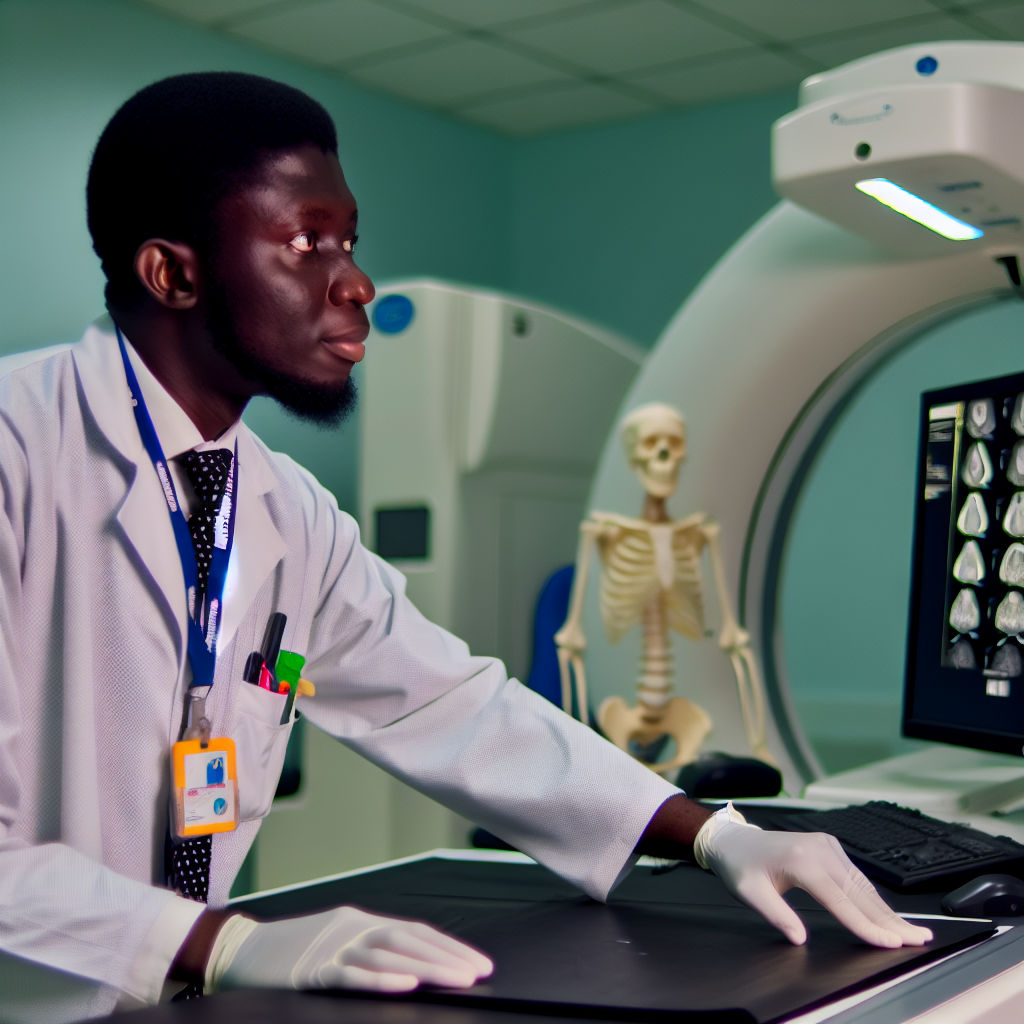
Positron Emission Tomography (PET) Scan:
Positron Emission Tomography, commonly known as a PET scan, is an advanced imaging technique that uses radioactive substances to produce three-dimensional images of functional processes in the body.
Introduction to PET scan technology:
- Utilizes positron-emitting radioactive substances.
- Detects gamma rays emitted by these substances.
- Generates detailed images of metabolic activity.
Applications of PET scans in detecting cancer and other diseases:
- Used in oncology for cancer detection and staging.
- Identifies metabolic changes indicating disease presence.
- Assists in monitoring response to cancer treatments.
- Helps diagnose neurological disorders like Alzheimer’s disease.
- Used in cardiology for assessing heart conditions.
Challenges in accessing PET scan services in Nigeria:
- Lack of awareness among the general population.
- High cost of PET scans, making them unaffordable for many.
- Limited availability of PET scan facilities in the country.
- Inadequate training for healthcare professionals in utilizing PET scan technology.
Future prospects of PET scans in the country:
- Increasing advocacy and awareness about PET scan benefits.
- Collaboration with international partners to improve access.
- Government investments in healthcare infrastructure for PET scans.
- Training programs for local healthcare professionals on PET scan technology.
PET scans play a crucial role in the detection and management of various diseases, including cancer and neurological disorders. While challenges exist in accessing PET scan services in Nigeria, future prospects look promising with efforts to improve awareness, affordability, and availability of this advanced imaging technology.
See Related Content: Understanding Restorative Dental Terminology
Challenges and Opportunities in the Field of Medical Imaging in Nigeria:
- Lack of infrastructure and trained professionals in medical imaging
- High cost of acquiring and maintaining imaging equipment
- Opportunities for improvement and advancements in medical imaging in Nigeria
- Importance of collaboration and partnerships in improving access to medical imaging services
Challenges in the Field of Medical Imaging in Nigeria:
One of the major challenges faced in the field of medical imaging in Nigeria is the lack of infrastructure and trained professionals.
This is a significant obstacle as the proper functioning of medical imaging equipment is crucial for accurate diagnosis and treatment.
Without adequate infrastructure and trained professionals, the quality of medical imaging services is compromised, leading to potential misdiagnosis and improper treatment.
Another challenge in the field of medical imaging in Nigeria is the high cost of acquiring and maintaining imaging equipment.
Medical imaging equipment, such as MRI machines and CT scanners, require substantial financial investment not only for their initial purchase but also for their maintenance and regular upgrades.
The high costs associated with these equipment make it difficult for healthcare facilities to modernize their imaging capabilities, limiting access to advanced diagnostic tools for patients.
Opportunities for Improvement in Medical Imaging in Nigeria:
Despite the challenges, there are significant opportunities for improvement and advancements in the field of medical imaging in Nigeria.
One such opportunity lies in the development of local infrastructure and the training of more professionals in medical imaging.
By investing in the necessary infrastructure and providing training programs for professionals, Nigeria can improve the quality of its medical imaging services and meet the growing demand for diagnostic imaging.
Furthermore, advancements in technology present opportunities for the advancement of medical imaging in Nigeria.
The integration of artificial intelligence and machine learning in medical imaging can enhance the accuracy and efficiency of diagnostic procedures, improving patient outcomes and reducing healthcare costs.
Embracing technological advancements can help Nigeria bridge the gap in access to critical medical imaging services.
Importance of Collaboration and Partnerships in Improving Access to Medical Imaging Services:
Collaboration and partnerships among healthcare providers, government agencies, private sector organizations, and international bodies are crucial in improving access to medical imaging services in Nigeria.
By working together, these stakeholders can pool their resources, expertise, and knowledge to address the challenges faced in the field of medical imaging and implement sustainable solutions.
Partnerships with international organizations can provide access to funding, training opportunities, and technological advancements that can support the development of medical imaging services in Nigeria.
Collaborating with private sector organizations can facilitate the acquisition of cutting-edge imaging equipment and expertise, while partnerships with government agencies can help institute policies and regulations that promote the growth of the medical imaging sector.
Medical imaging plays a crucial role in diagnosing and monitoring diseases in Nigeria.
Various imaging techniques are utilized in Nigeria including X-rays, CT scans, MRI, and ultrasound.
Importance of Medical Imaging in Healthcare
Medical imaging aids in early detection of diseases, guiding treatment decisions, and assessing treatment effectiveness.
Different Imaging Techniques Used in Nigeria
In Nigeria, X-rays are commonly used for bone fractures, while CT scans and MRIs are used for more detailed imaging.
Ultrasound is widely accessible and used for pregnancy monitoring and evaluating soft tissue structures.
Call to Action for Improved Access
Stakeholders in Nigeria’s healthcare system must invest in improving access to medical imaging services.
Increased funding, training for radiologists, and maintenance of equipment are crucial steps to enhance imaging services.
By investing in medical imaging, Nigeria can improve healthcare outcomes and save lives.
Additional Resources
Data Science and Medical Image Analysis Training for Improved …
Quality Assurance in Medical Imaging: A Review of Challenges in …

